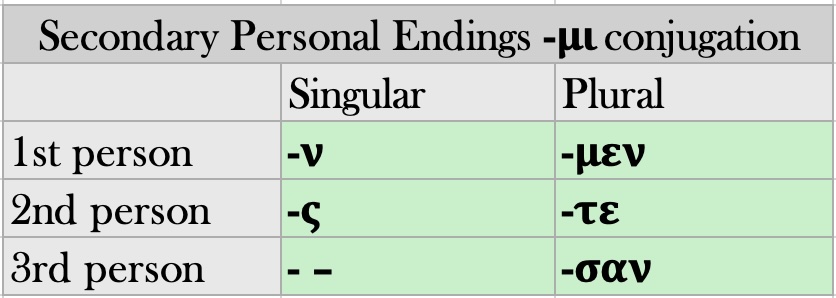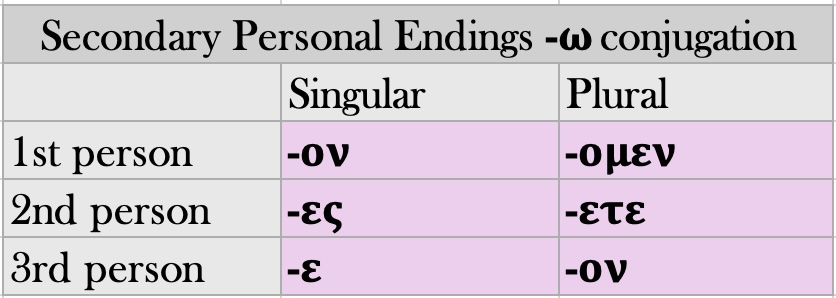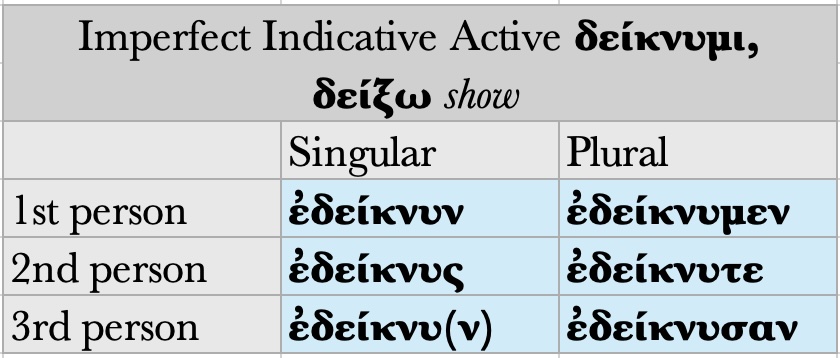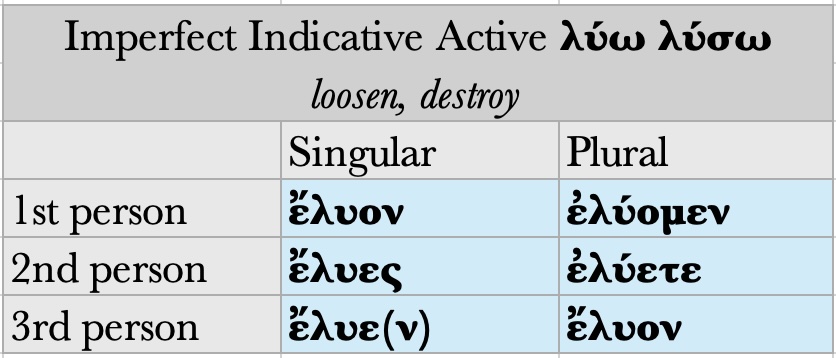25.3 The first secondary tense that we are learning is the IMPERFECT. While it is among the most commonly used tenses of FINITE verbs, there is NO INFINITIVE form of the imperfect.
There are three steps to forming this tense.
25.4 In the Greek conception, the IMPERFECT was conceived of as a state of existence, or an ongoing action in the past (S 1889, G 459). To form verbs in the IMPERFECT, Greek begins with the PRESENT TENSE STEM, not the verb stem. (This may strike you as curious, but there is a reason, which we discuss in later chapters).
- δεικνυ show
- λυ loosen
- λαμβαν take
25.5 To the beginning of this stem is added the AUGMENT ἐ– (S 429, G 264-265). This augment used to be a separate word that indicated that the verb was in the past. Gradually it became a prefix that signifies the past tense for indicative verbs.
With the addition of the augment, we now have the IMPERFECT TENSE STEM.
- ἐδεικνυ show
- ἐλυ loosen
- ἐλαμβαν take
25.6 SECONDARY personal endings are added to indicate person and number. As seen in the chart above, there are two sets of active secondary personal endings: those for athematic verbs (-μι verbs), and those for thematic verbs (-ω verbs).
Observe that for the secondary endings of –μι verbs, the 3rd person singular has no ending. This form simply stops with the ending of the verb’s present stem.
25.7 Note that –ω verbs have nearly identical secondary endings to –μι verbs. The main differences are that –ω verbs:
- Add the thematic vowel
- Have identical 1st person singular and 3rd person plural endings
25.8 Bringing it all together, the Imperfect, Indicative, Active of δείκνυμι δείξω (athematic):
25.9 The Imperfect, Indicative, Active of λύω λύσω (thematic)
(cf. S 383)
25.10 The Imperfect, Indicative, Active of λαμβάνω λήψομαι (thematic)










